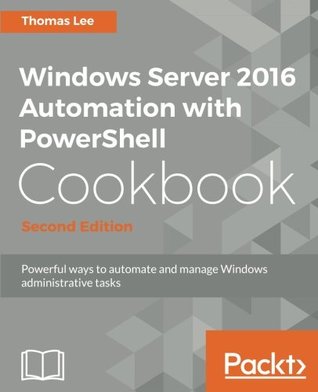

Most ebook files are in PDF format, so you can easily read them using various software such as Foxit Reader or directly on the Google Chrome browser.
Some ebook files are released by publishers in other formats such as .awz, .mobi, .epub, .fb2, etc. You may need to install specific software to read these formats on mobile/PC, such as Calibre.
Please read the tutorial at this link: https://ebookbell.com/faq
We offer FREE conversion to the popular formats you request; however, this may take some time. Therefore, right after payment, please email us, and we will try to provide the service as quickly as possible.
For some exceptional file formats or broken links (if any), please refrain from opening any disputes. Instead, email us first, and we will try to assist within a maximum of 6 hours.
EbookBell Team

4.8
94 reviews
ISBN 10: 1787122042
ISBN 13: 9781787122048
Author: Thomas Lee
This book showcases several ways that Windows administrators can use to automate and streamline their job. You'll start with the PowerShell and Windows Server fundamentals, where you'll become well versed with PowerShell and Windows Server features.
In the next module, Core Windows Server 2016, you'll implement Nano Server, manage Windows updates, and implement troubleshooting and server inventories. You'll then move on to the Networking module, where you'll manage Windows network services and network shares.
The last module covers Azure and DSC, where you will use Azure on PowerShell and DSC to easily maintain Windows servers.
1. What's New in PowerShell and Windows Server
Introduction
Exploring Remote Server Administration Tools (RSAT)
Discovering new cmdlets in PowerShell 4 and Windows Server 2012 R2
Discovering new cmdlets in PowerShell 5/5.1 and Windows Server 2016
Exploring PowerShellGet
Exploring PackageManagement
Creating an internal PowerShell repository
2. Implementing Nano Server
Introduction
Deploying a Nano Server in a VM
Connecting to and managing a Nano Server
Installing features with Nano Server packages
3. Managing Windows Updates
Introduction
Installing Windows Server Update Services
Configuring WSUS update synchronization
Configuring the Windows Update client
Creating computer target groups
Configuring WSUS auto-approvals
Managing updates
4. Managing Printers
Introduction
Installing and sharing printers
Publishing a printer
Changing the spool directory
Changing printer drivers
Printing a test page on a printer
Reporting on printer security
Modifying printer security
Deploying shared printers
Enabling Branch Office Direct Printing
Creating a printer pool
Reporting on printer usage
5. Managing Server Backup
Introduction
Configure and set backup policy
Examine the results of a backup
Initiate a backup manually
Restore files and folders
Backup and restore a Hyper-V Virtual Machine
Backup and perform bare metal recovery
Restore the registry from a backup
Create a daily backup report
Backup and restore using Microsoft Azure
6. Managing Performance
Introduction
Explore performance counters with Get-Counter
Explore performance counters using CIM cmdlets
Configuring and using Data Collector Sets
Reporting on performance data
Generating performance monitoring graph
Creating a system diagnostics report
7. Troubleshooting Windows Server 2016
Introduction
Checking network connectivity
Using troubleshooting packs
Use best practice analyzer
Managing event logs
Forward event logs to a central server
server 2016 powershell 7
powershell 7 windows server 2016
power automate windows server
windows server 2016 automatic updates disable
is windows server 2016 based on windows 10
is windows server 2016 windows 10
windows server 2012 r2 powershell
Tags: Thomas Lee, Automation, PowerShell